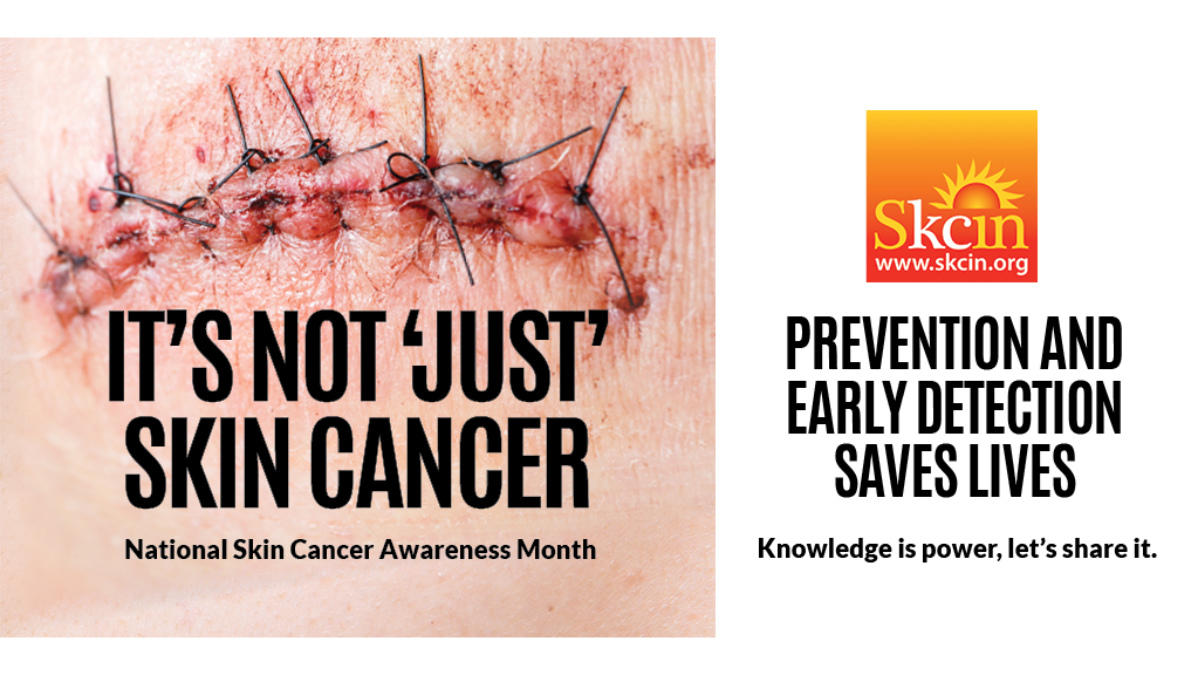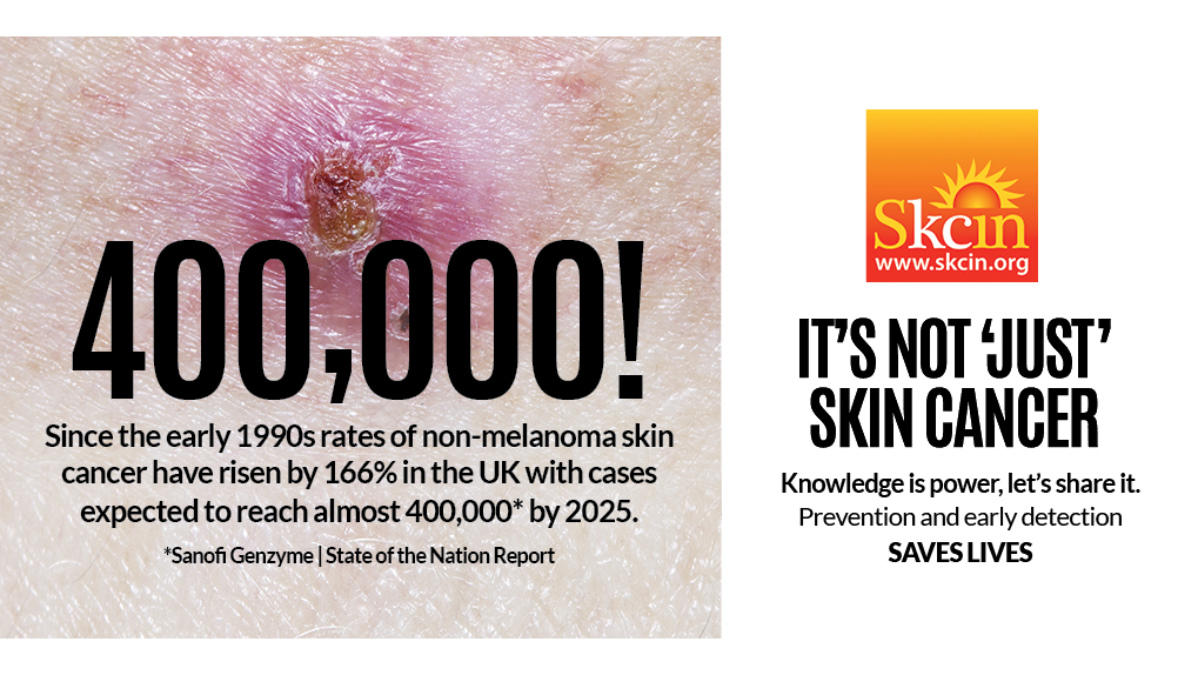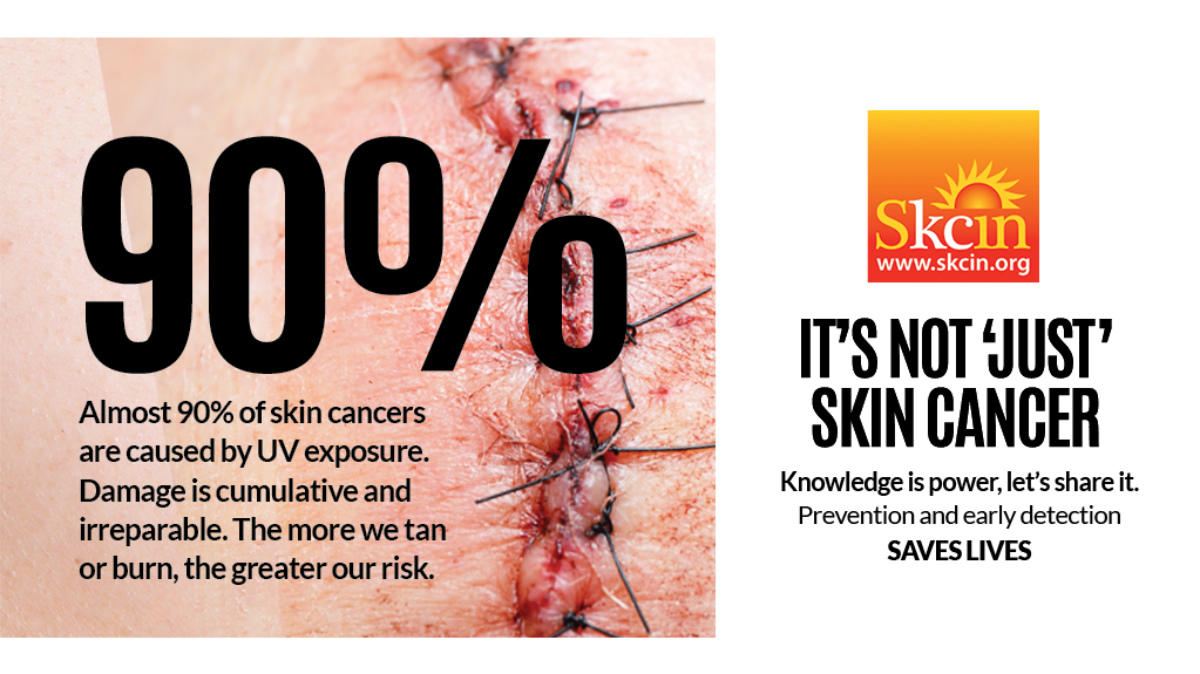- Homepage
- News and Features
- Stay safe in the sun this summer
Stay safe in the sun this summer
To mark National Skin Cancer Awareness Month throughout May, BIGGA has teamed up with leading skin cancer charity Skcin to find out more about what can be done to prevent skin cancer.

Skin cancer is the world’s most common cancer and as cases continue to rise at epidemic proportions, it has never been more important to take charge of your own health.
In support of National Skin Cancer Awareness Month, we spoke to leading skin cancer charity Skcin to find out more about what we can do to prevent skin cancer and why we should be regularly checking our skin for signs of change.
How prevalent is skin cancer in the UK?
Since the early 1990s rates of non‑melanoma skin cancer have risen 166% in the UK, with cases expected to reach almost 400,000 by 2025.
The incidence of melanoma (the deadliest form of skin cancer) has risen faster than any other common cancer in the UK. According to Cancer Research UK, one in 36 males and one in 47 females will be diagnosed with melanoma during their lifetime and alarmingly, it is one of the biggest killing cancers in the 15‑34 age group.
While skin cancer statistics are compelling, the good news is that around 90% of all cases are preventable. In addition, it is the only cancer we can physically see developing in its early stages, so with education, we can reverse these statistics and save many lives.
What causes skin cancer?
Around 90% of all skin cancers are caused by over‑exposure to UV radiation from the sun or sun beds. Sunburn, reddening, peeling and even tanning of the skin is clear indication of sun damage. While many people associate a tan with looking healthy, a tan is actually a sign that our skin has been harmed by UV radiation and is trying to defend itself against turf damage.
Sunburn has strong links to melanoma. When we burn, the superficial layers of the skin release chemicals that cause the blood vessels to expand and leak fluid, causing swelling, pain and redness. Without sun protection UV radiation starts to penetrate deep into the layers of the skin, causing damage to the DNA in our skin cells. Damage from UV is cumulative and irreparable, therefore once the tan fades, the damage remains, which can result in serious consequences over time.

How should we protect our skin from UV radiation?
Around 90% of skin cancers can be avoided by adopting simple sun safe strategies. Simply check the daily UV Index and when UV levels reach 3 or above, act to protect your skin by following Skcin’s Five S’s of Sun Safety:
1. Slip on clothing
- Clothing can be one of the most effective barriers between our skin and the sun and should be considered the first line of defence.
- Clothing should always cover shoulders, but ideally as much skin as possible.
- A closer weave fabric will provide better protection.
- A high UPF rated fabric provides best protection.
2. Slop on sunscreen
- Always use a sunscreen with a Sun Protection Factor (SPF) 30 or above.
- Make sure it is broad‑spectrum and carries a UVA symbol (ideally labelled minimum 4 star)
- Store in an accessible, cool place and remember to check the expiry date
- Apply a generous amount to clean, dry, exposed skin 20 minutes before going outdoors.
- Regardless of the instructions all sunscreens should be reapplied at least every two hours (more often if perspiring).
- Remember to protect your lips with an SPF 30+ lip balm.
Slap on a sun hat
- Always wear a hat with a wide brim that shades the face, neck, ears and cheeks.
- A close weave or UPF rated fabric will provide better protection.
Slide on sunglasses
- Solar UV radiation can be damaging to the eyes, so wear quality sunglasses.
- Overall protection depends on the quality of the lens as well as the design.
- Look for the European CE mark, which indicates a safe level of protection.
- Those labelled with a high EPF (which ranges from 1‑10) will provide best protection.
- Ensure they are close fitting and wrap‑around to stop UVR entering the top and sides.
- Remember price has no reflection on the quality of protection.
Shade from the sun
- Shade can provide a good barrier between our skin and the sun.
- Seek shade whenever possible, particularly during peak UV hours (11am‑3pm).
- Keep toddlers and babies in the shade at all times.
- Never rely on shade alone, always combine with personal protection measures.

What steps can we take to detect the early signs of skin cancer?
Skin cancers seldom hurt and are much more frequently seen than felt. The sooner a skin cancer is identified and treated, the better a person’s chance of avoiding surgery, or in the case of a serious melanoma, potential disfigurement or even death.
Getting to know your skin and regularly checking it (once a month) thoroughly from head to toe, is the best way to spot any potential warning signs.
There are lots of different kinds of skin cancers that can appear in many shapes, sizes and colours, so it’s wise to swot up on the various forms and characteristics to understand what to look out for. However, as a general rule of thumb use the following checklist and if you detect anything of concern, seek immediate advice from your GP or dermatologist.
If a new or existing skin nail or mucosal pigmented or non‑pigmented spot, lump, lesion, mole or freckle:
- Gets bigger or changes in shape, particularly getting an irregular outline;
- Changes colour, gets darker, becomes patchy or multi‑shaded;
- Becomes elevated, firm to touch and is growing;
- Starts to itch, gets painful, starts bleeding, gets crusty or becomes inflamed;
- Looks or is behaving differently to the rest of your moles or skin lesions;
- Is evolving in any way, such as changes in size, symmetry, surface characteristics or symptoms.
Continue the conversation: Visit www.skcin.org or find Skcin on Twitter at @skcinCharity
Author

Karl Hansell
Karl has been head of communications for BIGGA since March 2016. His duties include editing the monthly Greenkeeper International magazine, in addition to other communications activities for the association.
